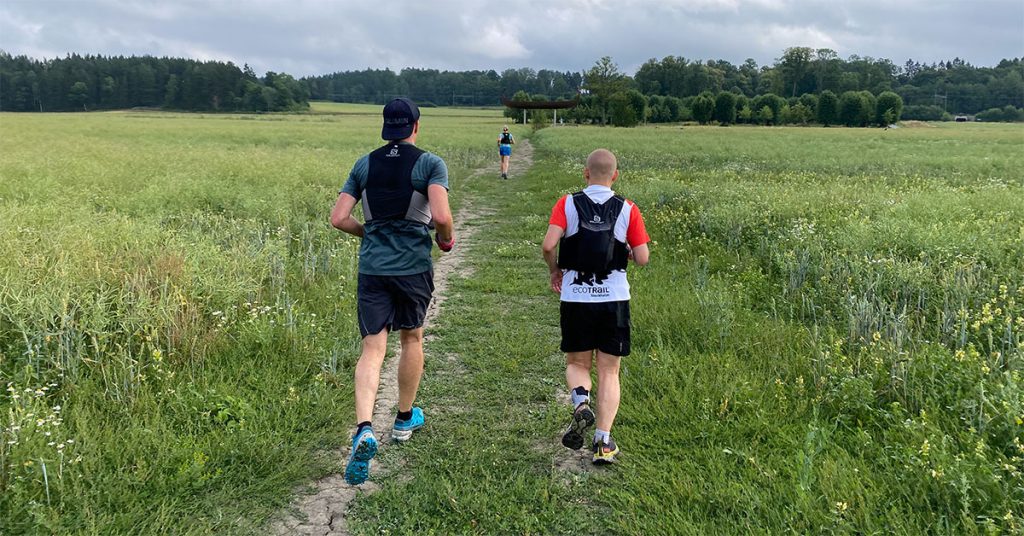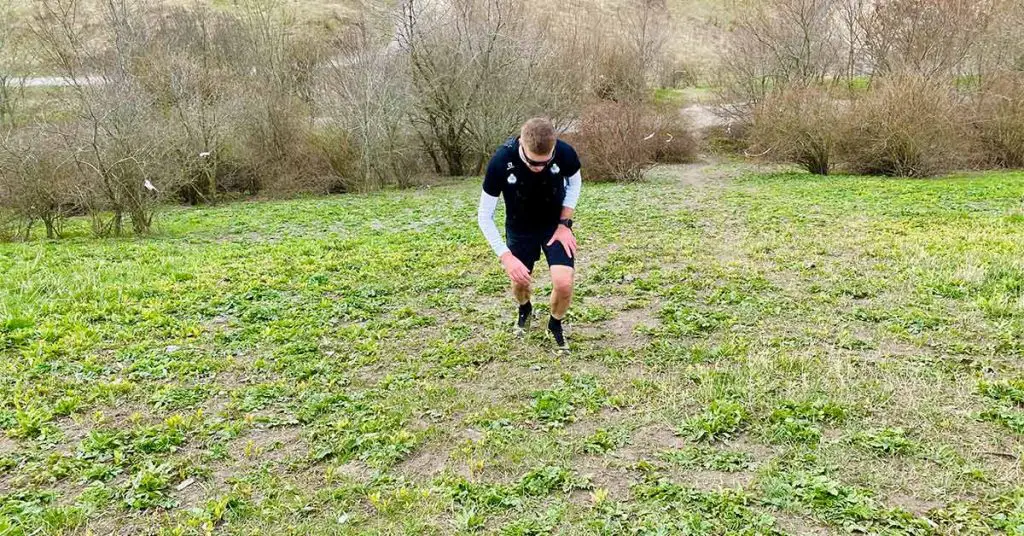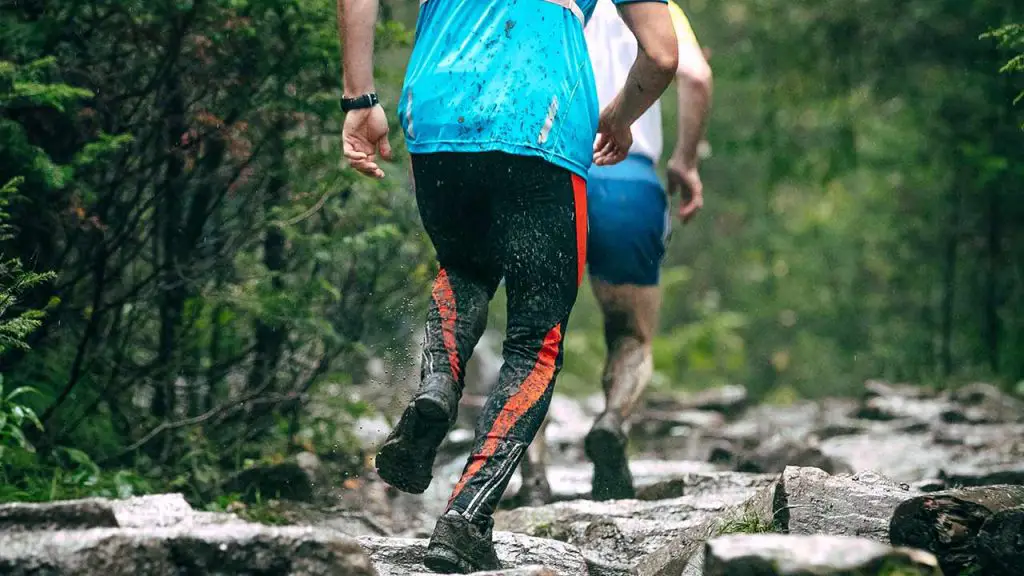Estimated read time: 5 minutes.
Trail running and cross country running are two different types of competitive events that you can participate in. Trail running involves a lot more obstacles than cross country, such as rocks, logs, streams, hills, and roots. Cross country runners run primarily on open fields with grass, mud, and gravel. Since both styles require training and preparation, it is essential to know what type suits your needs before deciding which one to do.
What Is Trail Running?
Trail running is a sport that takes place off-road in natural environments such as forests, mountains, and parks. It often includes obstacles, such as rocks, logs, streams, and hills. Trail runners must navigate uneven surfaces and have good balance to avoid potential injuries. Because of the varied terrain and unpredictable conditions, trail running is much more challenging than traditional road running.
How Does It Differ From Cross Country Running?
Cross country running is a sport that takes place on natural terrains as grassy fields and often includes dirt, water crossings, and other natural obstacles. Unlike trail running, cross country runners typically stay on the ground for most of the race, with few if any obstacles. Cross country races are also shorter in distance than trail runs, ranging from about 2 to 6.2 miles.
What Are the Similarities Between Trail Running And Cross Country Running?
Both styles of running require training, endurance, and strength. Many runners who train for trail or cross country races also participate in road racing events to increase their speed. Being familiar with different types of terrain is important because it can affect how you run–whether that means choosing a trail race with steep hills or a cross country event with water crossings.
If you are interested in participating in either of these events, it is important to know what type of runner you are and which would suit your needs best before signing up for an upcoming run. If you decide that trail running is the right choice for you, make sure to check out some of the best trails in your area and be prepared for a challenging but rewarding experience. If cross country running is more your style, find an event near you and get ready to run on grassy fields and through beautiful natural landscapes.
Tips to Prepare for the Event of Your Choice
Trail Running Tips:
- Please get familiar with the trails in your area and train on them regularly. Make sure they are challenging but not impossible to complete successfully before race day.
- Be prepared for an unpredictable experience; you never know what obstacles will be thrown at you! Practice running over logs, rocks, up hills, and through streams.
- Dress appropriately for the weather conditions and wear shoes that provide traction on uneven surfaces.
Cross Country Running Tips:
- Familiarize yourself with the course before race day, especially if it is your first time running it. This will help you anticipate any potential obstacles or tricky sections.
- Train on different types of terrain to prepare for the varying conditions you may encounter.
- Wear shoes that will provide good traction and stability on grassy surfaces.
- No matter which event you choose, always be prepared for a challenging but rewarding experience!
The Gear You’ll Need for Trail and Cross Country Running
Shoes: Shoes for the purpose should be number one on your list. A pair of trail or cross country shoes will provide the traction and stability you need to succeed on different types of terrain.
Running jacket: A jacket is important regardless of the weather conditions because you will be exposed to the elements for a more extended period.
Gaiters: Gaiters are essential if there is any chance of encountering water or mud during your race, as they will keep your feet and legs clean and dry.
Navigation: GPS watches and smartphone apps are a must-have if you want to have any chance of finishing on time and don’t get lost on the trails.
Energy snacks and drinks: You’ll need sustained energy to complete a trail or cross country race, so make sure you pack some energy and drinks that will last throughout the event.
Hydration: Hydration packs are a great choice because they will allow you to carry water and snacks easily. This is especially important if the race is longer than six miles.
Sunscreen: Sunscreen is a must-have whether you are running in the sun or not, as it will protect your skin from harmful UV rays.
Sunglasses: The same goes for sunglasses; they are important to have whether the sun is out or not.
Headlamp: A headlamp is essential if you are running a trail race that starts before sunrise or ends after sunset.
First-aid kit: It’s essential to be prepared for the worst, so make sure your first aid kit includes items such as bandages, antiseptic swabs, acetaminophen/Ibuprofen, and insect repellent.
Which Shoes Are Best for Each Kind of Runner (Trail or Cross Country)
Trail shoes: Trail running shoes are a little different from other running shoes. Because you are exposed to more natural elements such as rocks, roots, and mud, your trail shoes must have good traction, so you don’t slip or trip during the race. They are reinforced in key areas to protect your feet from these obstacles.
Cross country shoes: Cross country shoes are designed for races on grassy fields and other uneven surfaces. They have good traction and a narrow profile so that you can run quickly and efficiently. The tread is also deep enough to provide stability on slippery surfaces.
These shoes are usually equipped with spikes to provide better traction. When running on muddy terrain and grassy courses, these shoes will help you avoid the constant slipping and sliding that can cause injuries.
Tips on How to Avoid Injury When Doing either Form of This Sport
Be prepared for the terrain. If you are not used to running on trails, take some time to familiarize yourself with the different types of surfaces you will encounter. This will help prevent any unnecessary injuries.
Use caution when crossing obstacles. There is a higher chance of injury when trail running due to the uneven terrain. One of the best ways to avoid injury while trail running is to be aware of your surroundings. Make sure you know where the dangerous obstacles are and how to navigate around them. Also, try not to run too fast on uneven surfaces.
Conclusion
Trail running and cross country running are both great ways to get in shape and have a lot of fun. However, before you sign up for your first race, it’s important to be aware of the differences between the two sports and what type of gear you will need. Be prepared for anything that comes your way by packing the necessary items in your race day bag.
Now that you are well prepared, it’s time to choose the event that’s right for you and sign up! Get excited about a challenging but rewarding experience.
- How Many Laps Around a Track is a 5K: Your Guide - October 22, 2023
- When is Track and Field Season? - October 22, 2023
- Understanding the Length: How Long Is a Running Track? - October 22, 2023




